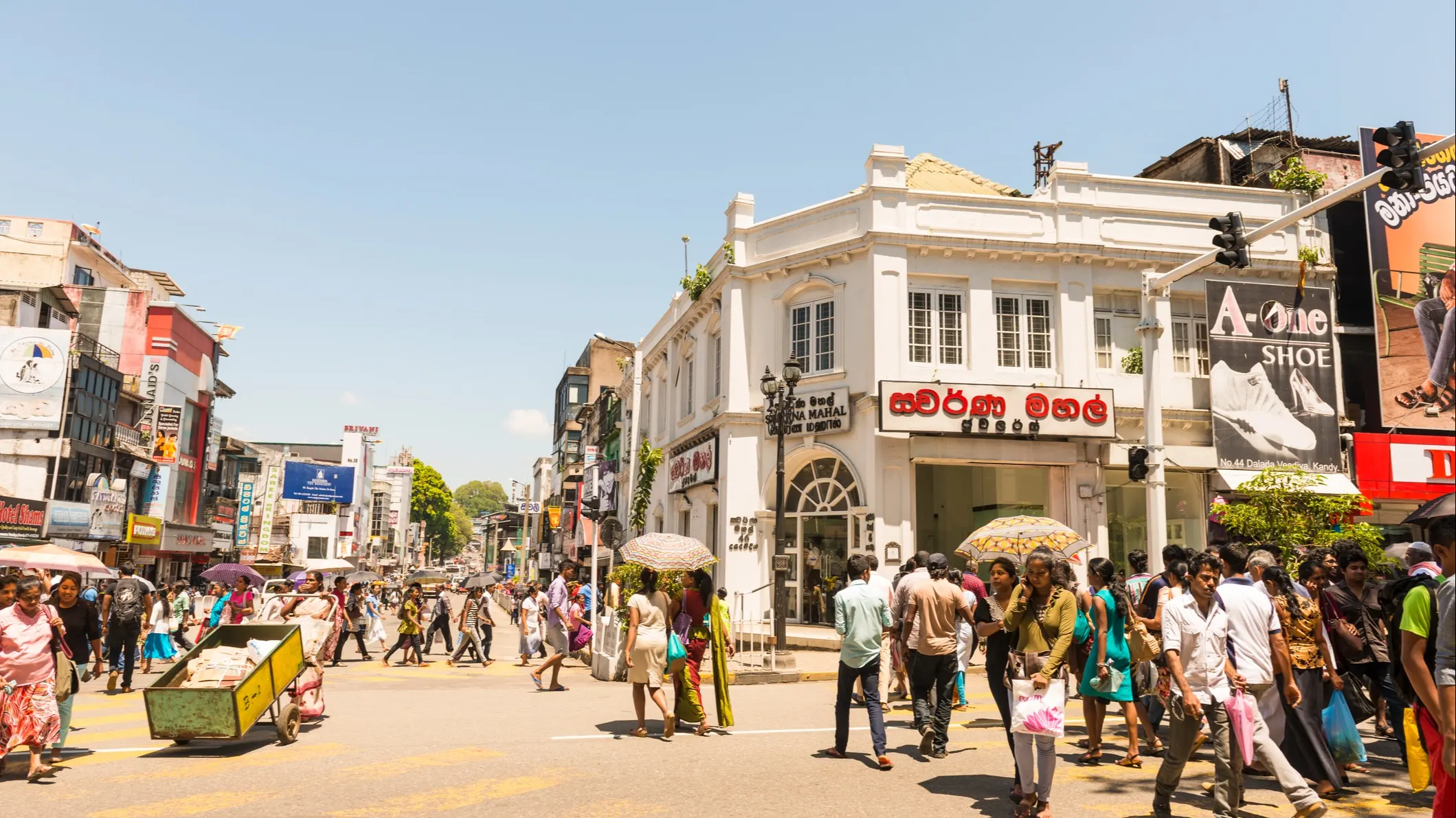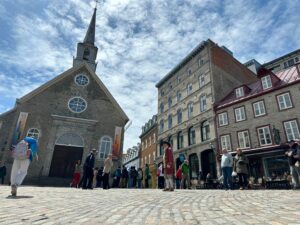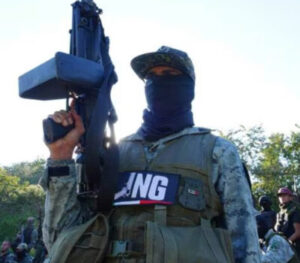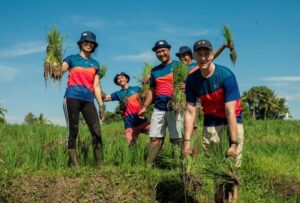We Left US Politics Behind for the Sweet Life in Kandy
5 min readName: Brendan Decker
From: Houston, TX
Living in: Kandy, Sri Lanka
After a year in Sri Lanka, my wife Lilly and I have no plans to return to the US.
We’d lived in Houston most of our lives. I’d retired from my job as an engineer at an energy company, and though we’d saved wisely, our life was still stressful. Lilly was suffering from osteoarthritis that cost tens of thousands of dollars to treat and left her inactive, and we were both tired of American politics permeating the culture.
Even before COVID-19, we’d felt the country was divided—but the political landscape became even more polarized during lockdown. We heard bickering in shopping malls, restaurants, on the street—and of course, on the news. We didn’t want to be a part of it, particularly when Lilly was already in physical pain.
In all sorts of beautiful, welcoming, culturally rich, saner places around the world, you can live well from $2,000 a month (all in, housing included). Sign up for our free daily IL Postcards e-letter and we’ll immediately send you a free report on the WORLD’S # 1 RETIREMENT HAVEN— plus 9 more spots you should have on your radar. Each day, you’ll earn about the best places to move to, retire, travel, buy real estate, and enjoy a good life for less, overseas.
By submitting your email address, you will receive a free subscription to IL Postcards and special offers from International Living and our affiliates. You can unsubscribe at any time, and we encourage you to read more about our Privacy Policy.
A close friend working in Sri Lanka mentioned a treatment that had cured his own wife’s back pain: Ayurveda medicine, a centuries-old combination of traditional treatments like yoga, massage, acupuncture, and frequent soaks in fragrant herbal baths.
Kandy is the epicenter of Ayurveda treatment and offers it at local shops and luxury resorts alike. Perched on a plateau in mountainous central Sri Lanka, the city is home to well over two million residents, with around 10,000 expats and growing.
We decided we were too adventurous to stay put in the States, and applied for My Dream Home visas to make the leap to Kandy. The requirements were generally straightforward:
-
You must be over 55 years old.
-
You must deposit $15,000 or the equivalent in an approved bank in Sri Lanka.
-
Monthly remittance of $1,500 for the principal applicant and $750 or the equivalent for spouse or dependents in an approved bank in Sri Lanka.
The application was processed in the capital of Colombo at the Department of Immigration and Emigration. The entire process took three weeks. We entered on a 30-day tourist visa, which we applied for online back in Houston, and brought only our passports, a passport photo, a certified bank statement, proof of supplementary income, and a Texas police clearance.
Now, a year later, we’re so glad we took the leap. The unhurried lifestyle, the crisp mountain air, and fresh food have undoubtedly improved our health. Lilly swears by Ayurveda medicine. After arriving, we met with Dr. J., who spoke perfect English (it’s the third official language of Sri Lanka) and was amiable and informative—a stark contrast with the condescension we were used to from doctors back in the States.
“We’ll begin with a treatment called Pinda Sveda, designed to assuage general aches and pains,” he explained. “Then you’ll be soaked in warm oil targeting your painful areas, using muslin poultices of herbal powders.” The treatment was continued with luxurious herbal baths, full-body warm oil massages, and the application of rich sandalwood pastes for two weeks.
Lilly’s back to playing lawn bowling and golf at the nearby Victoria Golf and Country Resort. Instead of watching the news, we take long walks through the nearby forests and tea plantations. Our favorite is the sprawling Kandy Botanical Gardens—said to be the best in Asia—and Bogambara Lake at the town center next to Sri Lanka’s most sacred temple, the Temple of the Tooth.
As an engineer, I also delight in taking the scenic eight-hour train ride from Kandy to the small hill town of Ella, passing through the local hills, forests, and tea plantations. Though it’s frequently named one of the most beautiful train journeys in the world, tickets cost only $1.80 (or $10, if you’d like to splurge on first class).

Kandy, Sri Lanka. |©iStock/helovi
We spend the rest of our time enjoying Kandy’s wide selection of cafes and restaurants, many serving Western fare, as well as colonial gentlemen’s clubs and hotels—once used by the British to escape the heat. When we miss home-cooked food, we head to Secret Alley Café, which serves up full American breakfasts as well as smoothie bowls.
Sri Lankan food is a delicious variation on Indian food, cooked with copious amounts of coconut milk. Our favorite is lamparis, a meaty curry wrapped in a banana leaf and baked in a clay oven. It’s a combination of flavors from the Netherlands, Portugal, and Sri Lanka.
We have several expat friends from the States and Europe. Some are here running small textile businesses, since there’s a plethora of clothes factories just outside of Kandy. Others, like us, have come here for retirement. Lilly and I spend only $2,800 a month, including holidays in the Maldives and southern India. Some of our expat friends live a champagne life on a beer budget of $1,500 a month, and enjoy a quality of life that rivals that of the US.
The Sri Lankan rupee has been falling for years, and we get such good value for our dollar that I sometimes feel like we must be getting stuff for free. Dinner plus drinks at a good restaurant costs under $15. A large beer only costs $1.
We pay $820 a month for a two-bedroom colonial home with a lush tropical garden (frequently visited by colorful birds) near the center of town. Our gardener, Mr. Jagarth, brings along grandchildren who delight in assisting (okay, sometimes hindering) his work. Lilly loves to spoil them with ice cream kept on-hand for their visits. We also have a wonderful maid called Sumina, who cooks mouthwatering local and Western dishes and looks after Lilly with devoted attentiveness.
Rent also includes cable TV… but we stay away from American news.
In all sorts of beautiful, welcoming, culturally rich, saner places around the world, you can live well from $2,000 a month (all in, housing included). Sign up for our free daily IL Postcards e-letter and we’ll immediately send you a free report on the WORLD’S # 1 RETIREMENT HAVEN— plus 9 more spots you should have on your radar. Each day, you’ll earn about the best places to move to, retire, travel, buy real estate, and enjoy a good life for less, overseas.
By submitting your email address, you will receive a free subscription to IL Postcards and special offers from International Living and our affiliates. You can unsubscribe at any time, and we encourage you to read more about our Privacy Policy.



